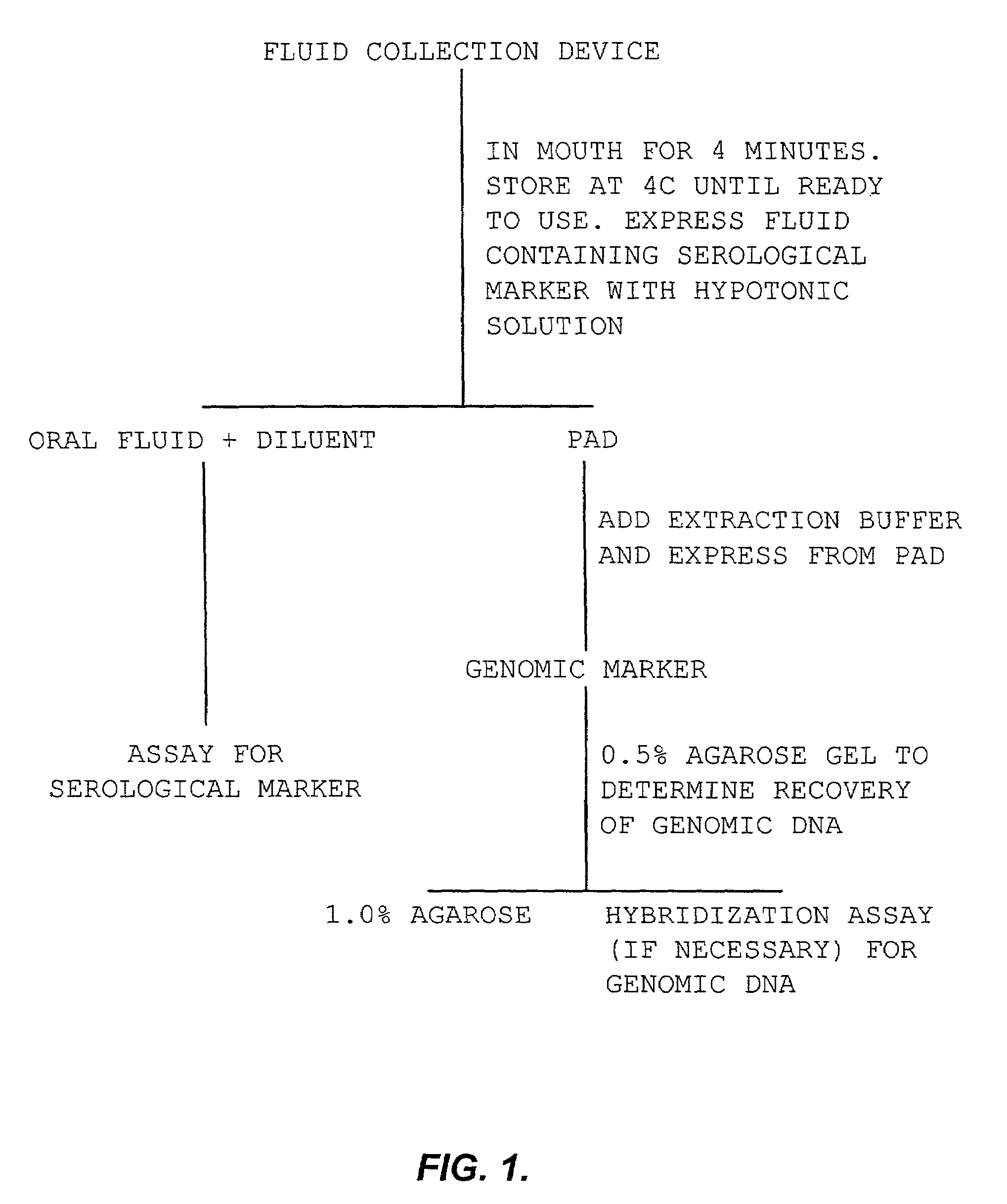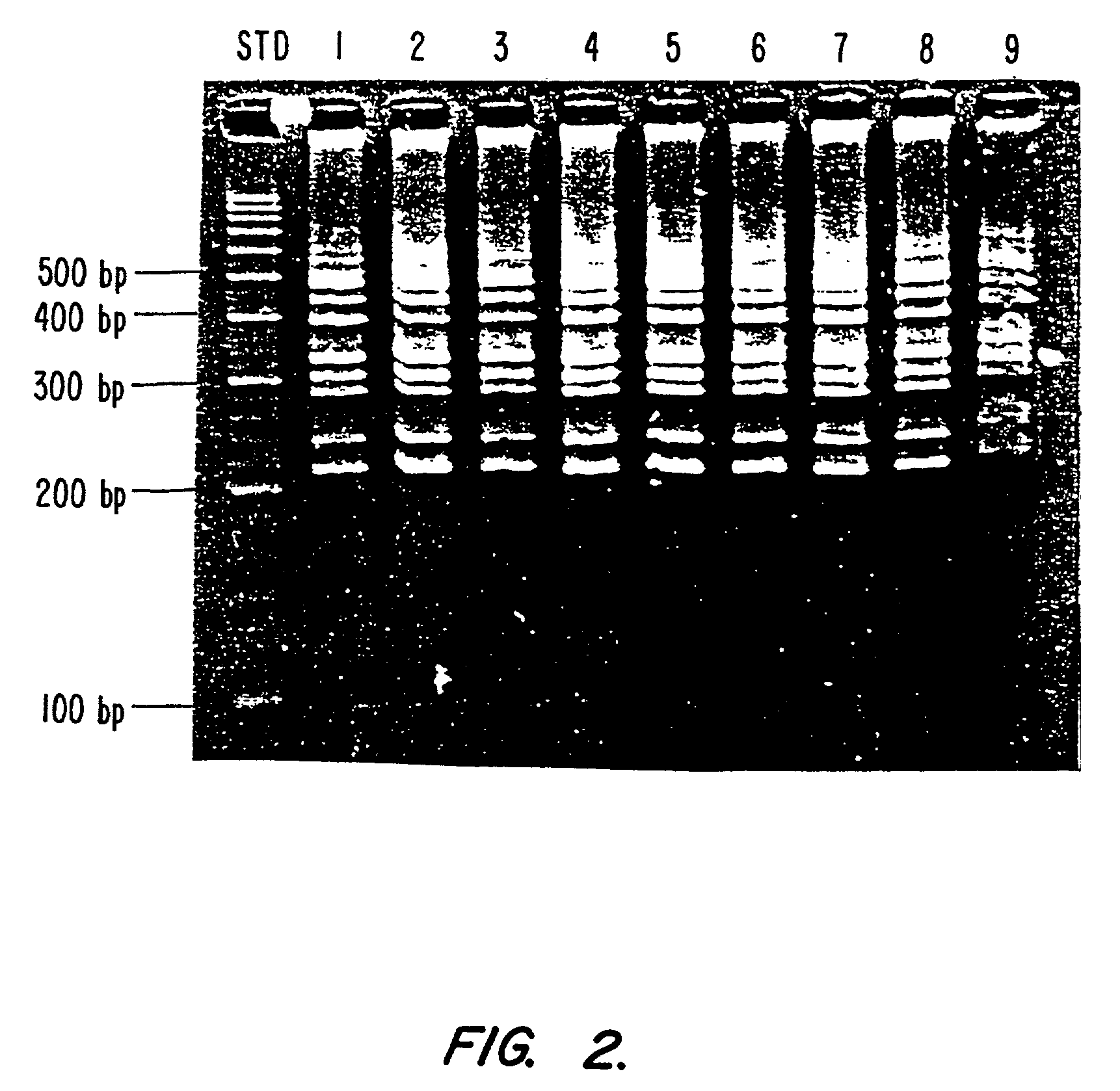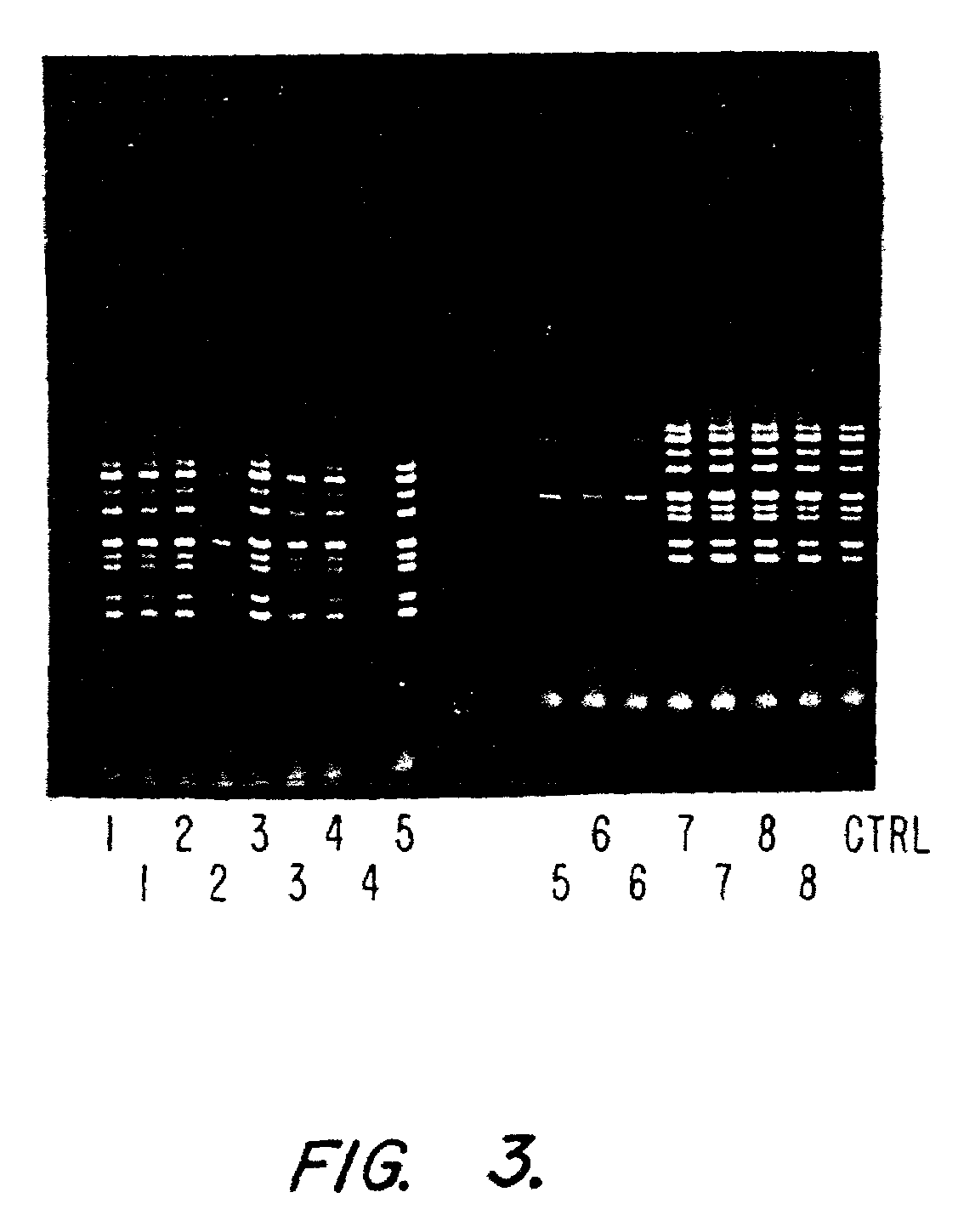Simultaneous collection of DNA and non-nucleic analytes
a technology of dna and nucleic acids, applied in the field of simultaneous collection of dna and non-nucleic analytes, can solve the problems of inconvenient collection of vaginal, rectal and nasal fluids, significant safety hazards, and invasive blood-based testing, and achieve the effect of rapid and convenient method
- Summary
- Abstract
- Description
- Claims
- Application Information
AI Technical Summary
Benefits of technology
Problems solved by technology
Method used
Image
Examples
example 1
Detection Of DNA from ORASURE® Pad
[0126]An ORASURE® pad was placed in the mouth of a human for four minutes. The pad was placed in the accompanying vial containing preservative and, at some time later, centrifuged at 2500 rpm for 15 minutes according to the manufacturer's instructions. The oral fluid expressed from the pad was stored at 4° C. for later use.
[0127]The genomic DNA was extracted from the pad by incubating the pad for 30 minutes at 55° C. in 1.0 mL of nucleic acid releasing solution (10 mM Tris, pH 8.0, 0.1 M EDTA and 0.5% SDS; all from BioWhittaker, Mass.) to which was added 100 μg Proteinase K (5′-3′, Inc., CO). The pad was then placed in the original vial, which was inserted into a 15 mL polypropylene centrifuge tube and centrifuged at 2500 rpm for 15 minutes. The recovery of fluid was approximately 1.0 mL.
[0128]To 1.0 mL of pad extract was added 1 mL 6M NaCl. The tube was shaken vigorously for 15 minutes and centrifuged at 2500 rpm for 15 minutes. The supernatant was...
example 2
2. Example 2
PCR Amplification of β-globin DNA
[0130]Note: all PCR reagents are from Perkin-Elmer. The PCR buffer was prepared as follows: 50 μL of PCR buffer, 10 μL 25 mM MgCl2, 40 μL dNTP (2.5 mM each),5 μL of 50 μM HBGlob5 (Operon, Ill.) and 5 μL of 50 μM HBGlob3 (Operon, Ill.). These primers will produce an amplified DNA sequence of 200 bp. To 22 μL of PCR buffer was added 10 μL DNA sample from Example 1 and 68 μL H2O for a final volume of 100 μL. Each tube was topped with mineral oil. Before PCR amplification, 5 μL of Taq polymerase was added to the tubes.
[0131]The globin sequence was amplified for 28 cycles; with separation of strands at 94° C., annealing of primers at 55° C. and polymerization at 72° C. At the end of the amplification run, the sample was stored at 6° C.
[0132]20 μL of amplified DNA was electrophoresed in a 1.0% agarose gel for 20 minutes at 100 V. Upon UV radiation, a strong band appeared at 200 bp, as expected. The amplified nucleic acid was sequenced and found...
example 3
3. Example 3
Determination of the Optimal DNA Extraction Method
[0133]Samples were collected using two ORASURE® devices (from a single subject), the genomic DNA extracted from each pad was divided into 4 equal volumes (350 μL each), and processed separately using the NaCl, ProCipitate, phenol extraction and the ammonium acetate methods. The quantity of DNA extracted is listed in Table 1. Since the ammonium acetate method proved to be the most efficient, two additional pads and additional cotton swabs were processed to confirm the method. The results are included at the bottom of Table 1.
[0134]The quality of the various DNA samples were analyzed using PCR. Multiplex PCR was utilized because of the complexity of the CFTR gene and the requirement for DNA of high quality. In the test, the 9 exons of the CFTR gene were multiplexed in a single tube (see below for CFTR PCR protocol). The results of the exon amplification experiment using multiplex PCR are displayed in FIG. 2. The quality of ...
PUM
| Property | Measurement | Unit |
|---|---|---|
| Fraction | aaaaa | aaaaa |
| Fraction | aaaaa | aaaaa |
| Concentration | aaaaa | aaaaa |
Abstract
Description
Claims
Application Information
 Login to View More
Login to View More - R&D
- Intellectual Property
- Life Sciences
- Materials
- Tech Scout
- Unparalleled Data Quality
- Higher Quality Content
- 60% Fewer Hallucinations
Browse by: Latest US Patents, China's latest patents, Technical Efficacy Thesaurus, Application Domain, Technology Topic, Popular Technical Reports.
© 2025 PatSnap. All rights reserved.Legal|Privacy policy|Modern Slavery Act Transparency Statement|Sitemap|About US| Contact US: help@patsnap.com



